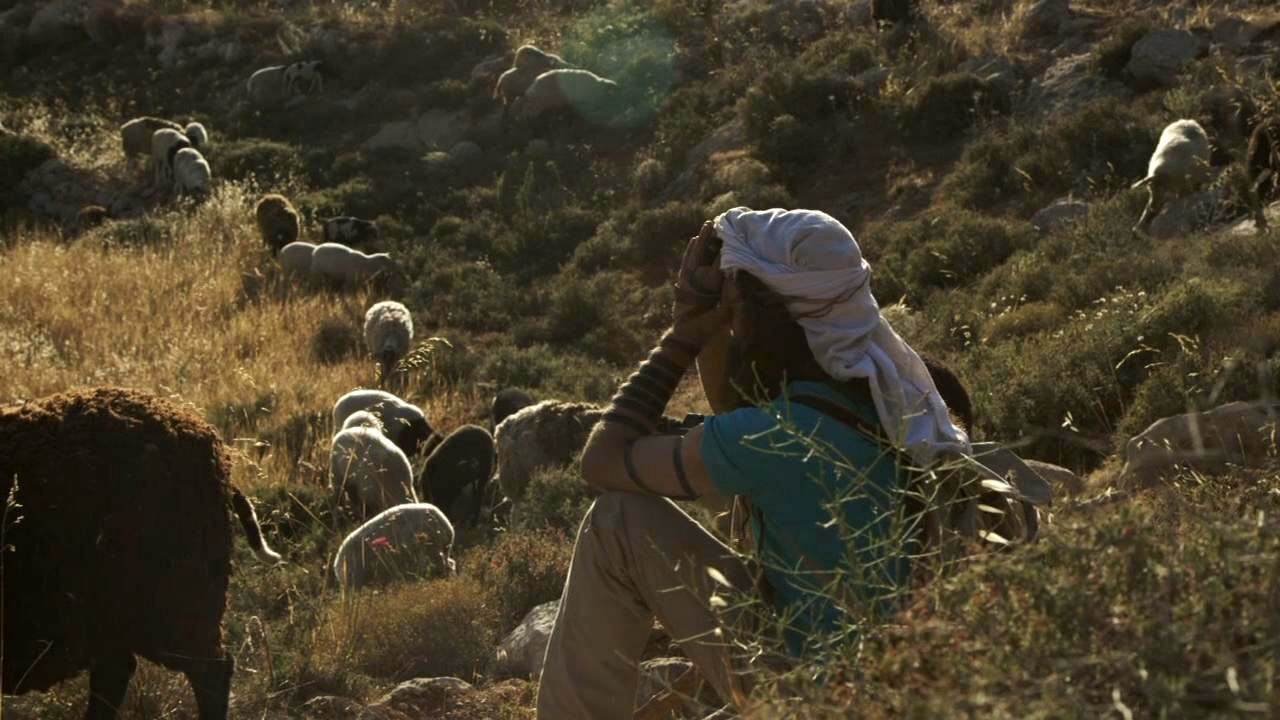(THIS ARTICLE IS MACHINE TRANSLATED by Google from Norwegian)
Israeli filmmaker Avner Faingulernt has spent four years in the mountainous landscape south of the West Bank. The result is two films that tell two parallel stories about two different families, many of which are still the same. In the first, we follow the Palestinian shepherd Omar and his closest; in the other the Israeli settler Avidan and his pregnant wife, a small group of aides and their goats and sheep.
“I loved visiting both worlds. I saw no interaction, and nothing that connected them. But maybe this is the beginning of something anyway, "the director said after the screening at the Docaviv film festival in Tel Aviv in May.
Similarities under different conditions
Omar comes from the large village of Yatta south of the West Bank, but moves to a more remote area. He will settle on the land his Bedouin family has owned for generations, to live closer to his "tribe." The new life is demanding, and after spending the first wave of thunderstorms under a plastic blanket, Omar realizes he needs a proper home. He builds his primitive brick house at night to escape the gaze of the Israeli soldiers who control the area.
"The Arabs do not understand the country, they are not associated with it."
The settler Avidan, in turn, is a veritable hippie ideal, who wants to escape the materialistic urban lifestyle to spend time with his animals and a guitar on a rocky hill. His home is an abandoned wooden building that he and his mates have renovated in full daylight – a relatively typical settler outpost.
The two families build their dreams in similar weather conditions. And in both cases, they find similar solutions to their problems – for example, they sleep on roof mattresses when the summer temperature becomes unbearable. Cases like Omars and Avidans are unusual, which underscores the similarities between the two. The connection is also illustrated through the use of colors – for example, the importance of blood after both have slaughtered a goat.
Brutal reality in beautiful landscape
The differences are most obvious in the political field. According to the Israeli human rights organization Btselem, there are more than 200 settlements in the West Bank, including East Jerusalem. By international conventions, all are illegal, but nonetheless, 127 of them enjoy official recognition from the Israeli state. Another 100 are so-called settler outposts. These usually consist of only a few buildings and a handful of people, but often control large tracts of land and hope to gain official recognition in the future. In the meantime, the settlers in the outposts receive the army protection by virtue of being Israeli citizens.
 This is how the brutal reality of the beautiful landscape the films take place, near the southern Hebron mountains. This is one of the poorest areas in the West Bank; Here the most impoverished Palestinian peasants live, and many of the local Jewish settlers are deeply radicalized. The situation is largely tense. Local Bedouin children are often harassed by settler youth on their way to school, and their fathers' youths in the olive groves are raised by the root.
This is how the brutal reality of the beautiful landscape the films take place, near the southern Hebron mountains. This is one of the poorest areas in the West Bank; Here the most impoverished Palestinian peasants live, and many of the local Jewish settlers are deeply radicalized. The situation is largely tense. Local Bedouin children are often harassed by settler youth on their way to school, and their fathers' youths in the olive groves are raised by the root.
In the films, this manifests itself in the complete absence of contact between the two families. At one point, Avidan sees a Palestinian flock pass in the distance, commenting that while the meadows of the Arabs are dry and scarce, "his" land is green and lush – "for the Arabs do not understand the land, they are not associated with it".
Finally, Avidan has to give up his project for financial reasons. He explains to his wife and friends that he has finished the place anyway, that it is time to start something new. This gives a new perspective on the story: Avidan has the privilege of being able to pack up and move whenever he wants, while Omar and his family are doomed to stay – and perhaps get new, threatening neighbors. He has no illusions about choosing something else.
Engaging storytelling
The two films have the common title In the Desertbut can be seen separately, as each of them tells an independent story. Seeing them together nevertheless provides an even stronger experience.
Avidan has the privilege of being able to pack and move whenever he wants, while Omar and his family are doomed to stay.
The storytelling engages, and the grip of presenting the lives of the two men in parallel is beautiful. But calling the work "a new beginning", as director Faingulernt hinted, is less convincing. At times, on the contrary, the films, by virtue of their mere existence, seem to reinforce and intensify the differences, rather than reduce them.
Omar was in Tel Aviv when the films were shown during Docaviv this year. He did not want to comment on the film, but apologized for it being Ramadan, the Muslim fasting month. With an ironic smile he said he was in a hurry to go into town to find something to eat. "Kosher!" he exclaimed, hinting that he was in an Israeli metropolis, with many observing Jewish eating habits.


